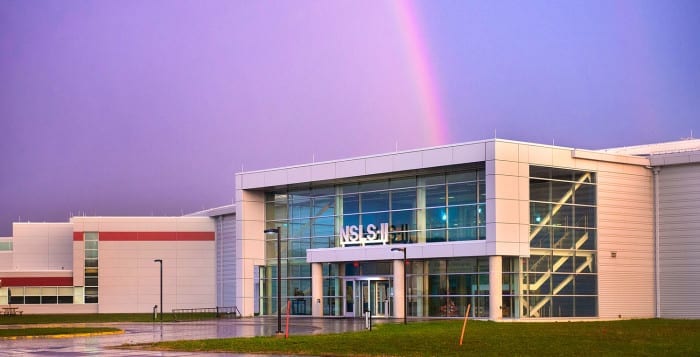BNL researchers reflect on NSLS-II, share hopes for 2016

They built something that makes Superman’s x-ray vision seem antiquated by comparison. Many of them have dedicated as much as a decade of their lives to constructing a cutting-edge technology that will help researchers around the world see small, rapid processes as they are happening.
As 2016 begins, scientists from around the world are heading to Brookhaven National Laboratory in Upton to look closely at processes and atomic configurations at the National Synchrotron Light Source II, a $912 million scientific facility completed last year. At the same time, those involved in constructing this project plan to continue to add beamlines.
The project originally came in under budget and ahead of schedule, allowing BNL to expand the size of the ring building, which improves the performance from the instruments, among other enhancements.
“In principal, at least in a peripheral way, if it involves analysis of the structure and function of materials, there is nothing beyond the reach of a facility like NSLS-II,” said Erik Johnson, who has held a variety of positions at NSLS-II from accelerator interface manager to finishing as the deputy project director.
“This is not only an increase in quantity but on quality” of information,” said Ferdinand Willeke, who came to BNL in 2007 as the head of the Accelerator Division, which built and operates the magnet storage ring. “In an extreme case, data are collected 10,000 times faster.” Willeke said the process involved a seven-layer structure with about 30,000 activities.
“The project was more a marathon than a sprint, but, as in each large project, there are issues to resolve to keep everything proceeding smoothly,” Willeke said. “This required enormous commitment from the entire staff” who routinely went the extra mile “from the start to the end.”
Those who worked on the project credited a large team of people for helping to complete the NSLS-II. That includes Steven Dierker, who was the project director, Marty Fallier, who was the Facilities Division director during the design and construction, Diane Hatton, who was the business manager, and John Hill, Qun Shen and Paul Zschack, who were, at various times, in charge of the beamlines. Satoshi Ozaki served as senior project advisor. Samuel Krinsky “was a prominent accelerator scientist who had a large influence on NSLS-II accelerator layout in the pre-project phase,” Willeke said. Krinsky passed away last year.
The project itself included hundreds of workers in various stages, while leaders from different groups routinely met in person or sent emails back and forth during weekends, vacations or personal time, ensuring that the process stayed on target and under budget. “I’ve invested 10 or 15 years of my life to bring this to reality,” said Johnson.
So far, the reviews from the beamlines that have gone live have been encouraging. “The performance of the accelerator itself is a dream,” said Elaine DiMasi, a physicist in the Photon Sciences Division at BNL. “According to all reports, its stability and brightness are every bit as good as what was theoretically planned.”
As a facility funded by the Department of Energy, the NSLS-II can uncover undocumented details about batteries while they are in use. Indeed, scientists can place batteries in front of the beamline and determine exactly what happens as they discharge, potentially leading to a more effective design of future batteries and energy storage devices.
“Imagine all the material things you could do with the capabilities we have here, in trying to improve energy efficiency or energy conversion,” Johnson said. “In my view, next to food security, [energy security] is at the top of the geopolitical issues that shape the world.”
Johnson is interested in seeing what the NSLS-II can reveal about catalytic reactions and chemical pathways. In some biochemical reactions, catalysts help speed up or direct processes. Along the way, however, some intermediate steps are far preferable to others, which might slow a reaction.
“When you have a chemical reaction, you may want this [molecule or intermediate step] and not the other six,” Johnson said. The NSLS-II will allow scientists to focus on what they can do to the catalyst to encourage one particular step. “You may wind up making configuration changes to the way the molecules are absorbed on the working catalyst surface so some chemical pathways are more favored than others. There’s a whole gamut you can look at now that you couldn’t [see] before.”
While the team who made the NSLS-II a reality is pleased with what it can do, they realize there’s still considerable work ahead. “We are still in the process of bringing this machine to full performance,” said Willeke.
DiMasi said those who are building the second, third and fourth waves of beamlines are “sprinting to complete our tasks and help make the full build-out a reality.”






